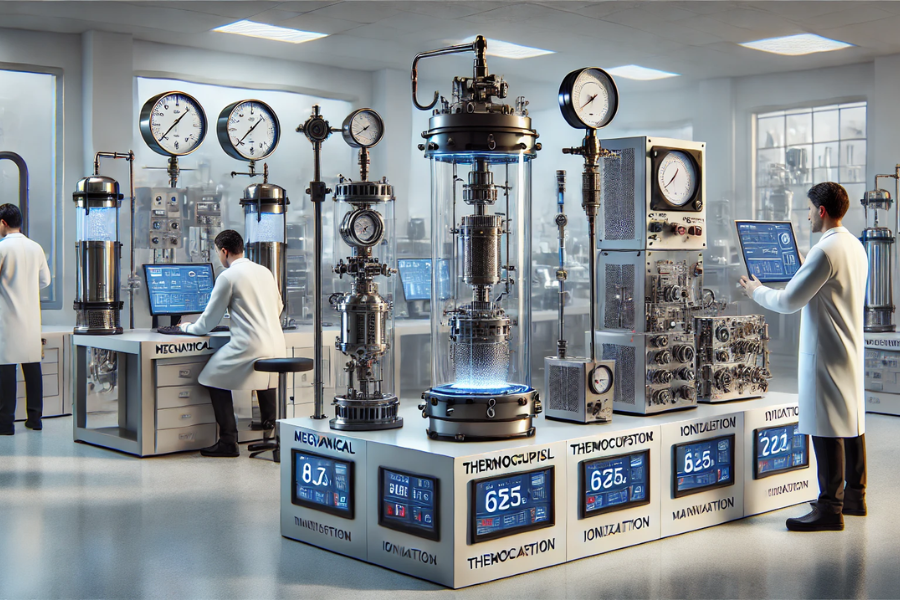The Science Behind Vacumetros: A Comprehensive Overview
Whether you’re an experienced mechanic, a passionate DIYer, or an automotive expert, knowing your tools inside and out is crucial. When it comes to measuring and controlling vacuum pressure, Vacumetros—commonly referred to as vacuum gauges—are essential. This article explores how Vacumetros work, their diverse applications, and offers guidance on using them effectively. Additionally, we’ll delve into the latest advancements in vacuum gauge technology and their implications for users.
Introduction to Vacumetros: Defining the Tool and Its Importance
Vacuum gauges, or Vacumetros, are indispensable tools for measuring pressure levels below atmospheric pressure. These gauges feature a dial face with a needle that indicates the level of vacuum or negative pressure within a system. They are usually calibrated in inches of mercury (inHg) or millimeters of mercury (mmHg) and play a critical role in ensuring the efficiency and performance of various systems.
Vacuum essentially represents the absence of atmospheric pressure, making accurate measurement essential for numerous mechanical processes. Professionals use Vacumetros to troubleshoot and fine-tune engine performance, HVAC systems, and household appliances. Without these gauges, diagnosing and fixing issues would rely on less precise methods, leading to inefficiencies and potentially incorrect solutions.
The Science Behind Vacumetros: Understanding How They Work
Most vacuum gauges rely on a mechanism known as the bourdon tube. In mechanical gauges, this tube responds to changes in vacuum pressure. When the pressure inside the bourdon tube differs from the vacuum source, it deforms. This deformation causes the gauge’s needle to move, displaying the vacuum level.
In digital and electronic vacuometers, the principle is similar but involves converting pressure changes into electrical signals. These signals are then processed by the device’s electronics to provide a digital readout of the vacuum level. The accuracy of these measurements depends on the sensitivity of the pressure-sensing components and their ability to translate small pressure changes into a readable format.
Applications in Different Fields: Automotive, HVAC, and Home DIY Projects
Automotive
In the automotive industry, vacuum gauges are vital for diagnosing engine issues, particularly those involving the fuel system and exhaust. They assist in adjusting carburetors, setting ignition timing, diagnosing vacuum-operated accessories, and tuning performance for both gasoline and diesel engines.
HVAC
For heating, ventilation, and air conditioning (HVAC) systems, vacuometers are essential during system evacuation. They help remove moisture and contaminants under a deep vacuum, preventing inefficiencies and potential damage. HVAC professionals also use these gauges to test and balance air distribution systems.
Home DIY Projects
DIY enthusiasts use vacuometers for various tasks, including maintaining and repairing appliances, cleaning drains, and testing simple vacuum systems like vacuum cleaners. These gauges ensure that home systems operate efficiently and effectively.
Choosing the Right Vacumetro for Your Needs: Factors to Consider
Selecting the right vacuum gauge involves several factors:
Type of Instrument
Analog gauges are generally more affordable and easy to use without requiring power. Digital gauges offer greater precision and may feature additional capabilities such as data storage or wireless connectivity.
Pressure Range
Ensure the gauge’s pressure range fits your needs. Different gauges are designed for high vacuum, low vacuum, or specific pressure ranges.
Durability and Use Environment
Consider the environment where the gauge will be used. Harsh industrial settings may require a more robust gauge with protective features.
Additional Features
Some gauges come with extra features like alarms, peak-hold functions, or compatibility with various fluids and gases. These features can be beneficial depending on your specific application or preferences.
Step-by-Step Guide on How to Use a Vacumetro Effectively
Follow these steps to use a vacuum gauge effectively:
- Prepare the System
Ensure the system you’re testing is ready for vacuum measurement. This may involve sealing openings and checking for leaks. - Connect the Gauge
Attach the vacuum gauge to the system’s pressure port using the appropriate tubing or fittings. Make sure all connections are secure and any inline valves are open. - Take the Reading
Start the system and observe the vacuum gauge reading. Record the stable reading and compare it to the system’s specifications or the expected value for the application. - Interpret the Results
Use the vacuum level to diagnose issues or confirm the system’s proper operation. If the reading is not as expected, further investigation may be needed to determine the cause.
Common Mistakes to Avoid When Using Vacumetros
To ensure accurate measurements and safe operation, avoid these common mistakes:
Over-Pressurizing the Gauge
Exceeding the gauge’s maximum rated pressure can damage the bourdon tube or cause leaks. Always start with low pressure and increase gradually while monitoring the gauge.
Using the Wrong Gauge
Select a vacuum gauge specifically designed for the type of pressure you’re measuring—whether it’s absolute, differential, or relative pressure.
Incorrect Attachment
Improper connections can lead to leaks and inaccurate readings. Use the correct fittings and check all connections for tightness.
The Future of Vacumetros: Innovations and Trends
The future of vacuum gauges is being shaped by advancements in sensor technology and digital interfaces. Innovations include AI and machine learning for predictive maintenance, compact wireless gauges for remote monitoring, and enhanced sensitivity for more precise measurements. Additionally, the push towards environmentally friendly practices is driving the development of vacuum gauges that are compatible with the latest green technologies and refrigerants.
Conclusion: Recap and Call to Action
Vacuum gauges are crucial tools that provide precise insights into system performance, aiding in diagnostics and maintenance across various fields. By understanding the science behind these devices and adhering to best practices in their use, professionals and DIY enthusiasts alike can ensure efficient and safe system operation.
Whether you’re an automotive enthusiast fine-tuning engine performance, an HVAC technician managing complex air systems, or a homeowner maintaining household appliances, the right vacuum gauge can make a significant difference. Familiarize yourself with this essential tool, its applications, and the evolving technology to stay ahead in your field.






